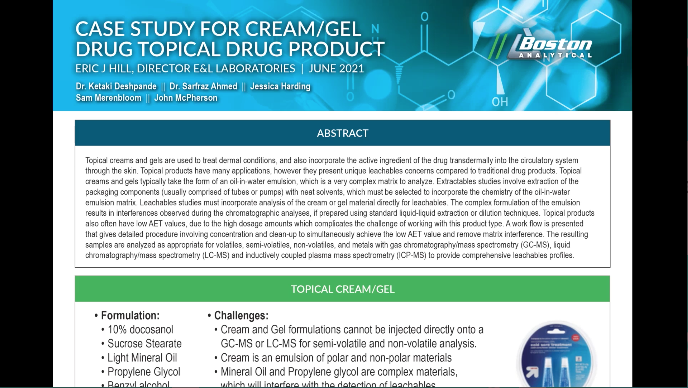Abstract:
Topical creams and gels are used to treat dermal conditions, and also incorporate the active ingredient of the drug transdermally into the circulatory system through the skin. Topical products have many applications, however they present unique leachables concerns compared to traditional drug products. Topical creams and gels typically take the form of an oil-in-water emulsion, which is a very complex matrix to analyze. Extractables studies involve extraction of the packaging components (usually comprised of tubes or pumps) with neat solvents, which must be selected to incorporate the chemistry of the oil-in-water emulsion matrix. Leachables studies must incorporate analysis of the cream or gel material directly for leachables. The complex formulation of the emulsion results in interferences observed during the chromatographic analyses, if prepared using standard liquid-liquid extraction or dilution techniques. Topical products also often have low AET values, due to the high dosage amounts which complicates the challenge of working with this product type. A work flow is presented that gives detailed procedure involving concentration and clean-up to simultaneously achieve the low AET value and remove matrix interference. The resulting samples are analyzed as appropriate for volatiles, semi-volatiles, non-volatiles, and metals with gas chromatography/mass spectrometry (GC-MS), liquid chromatography/mass spectrometry (LC-MS) and inductively coupled plasma mass spectrometry (ICP-MS) to provide comprehensive leachables profiles.
Click here to view the poster presentation.
